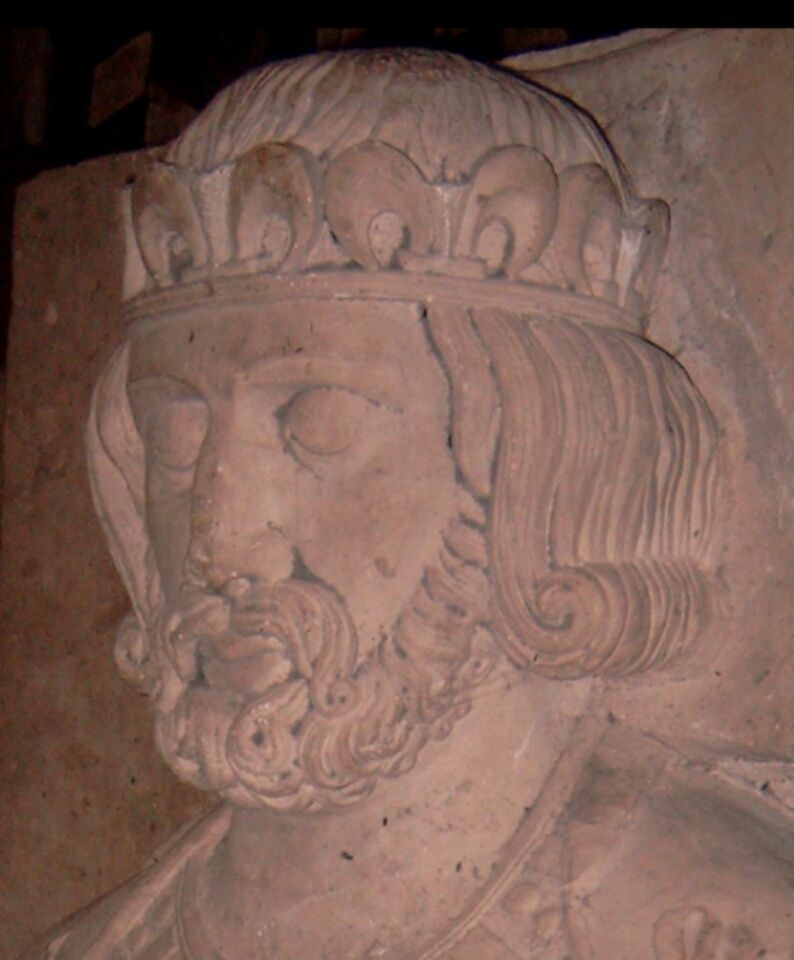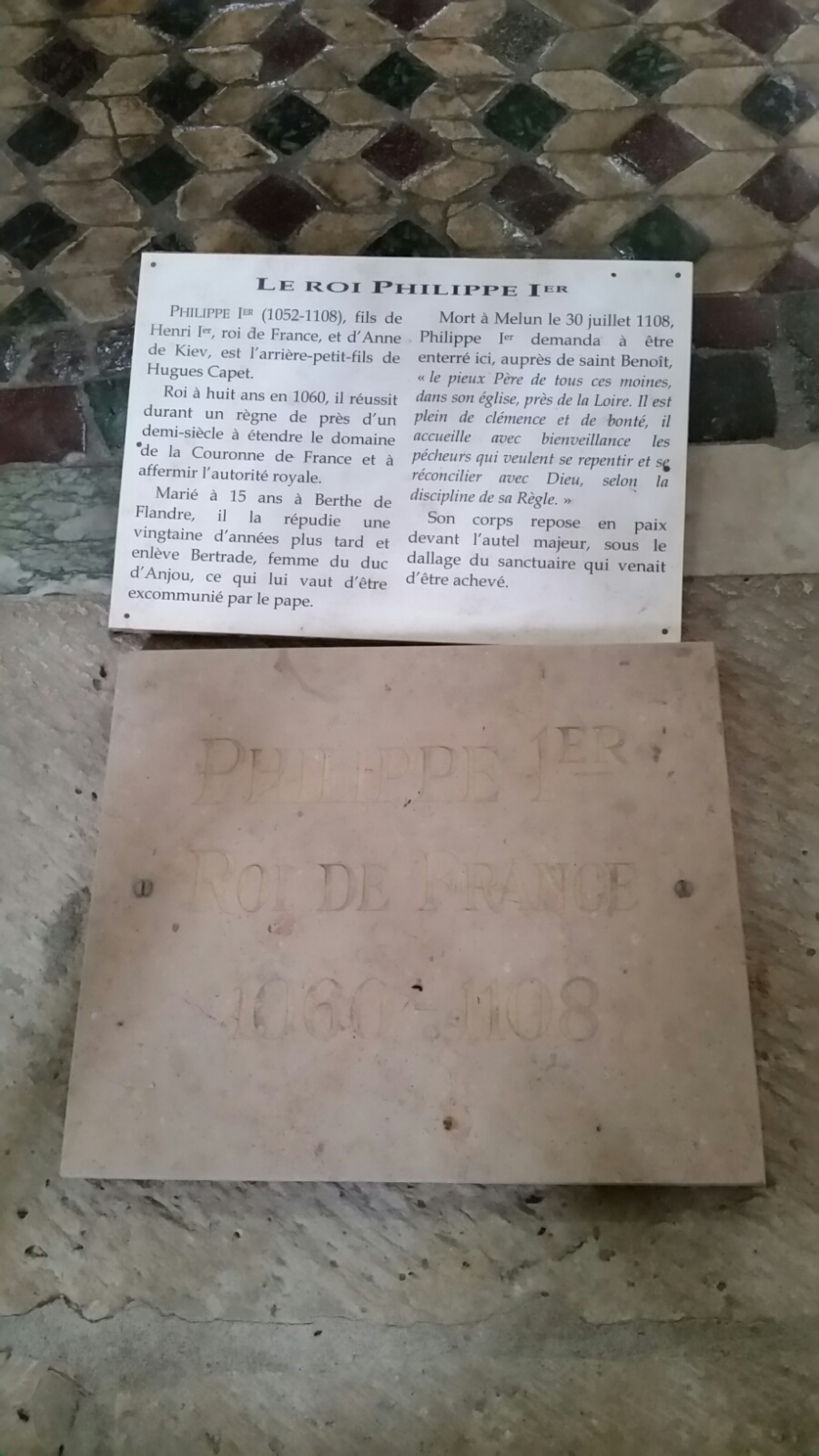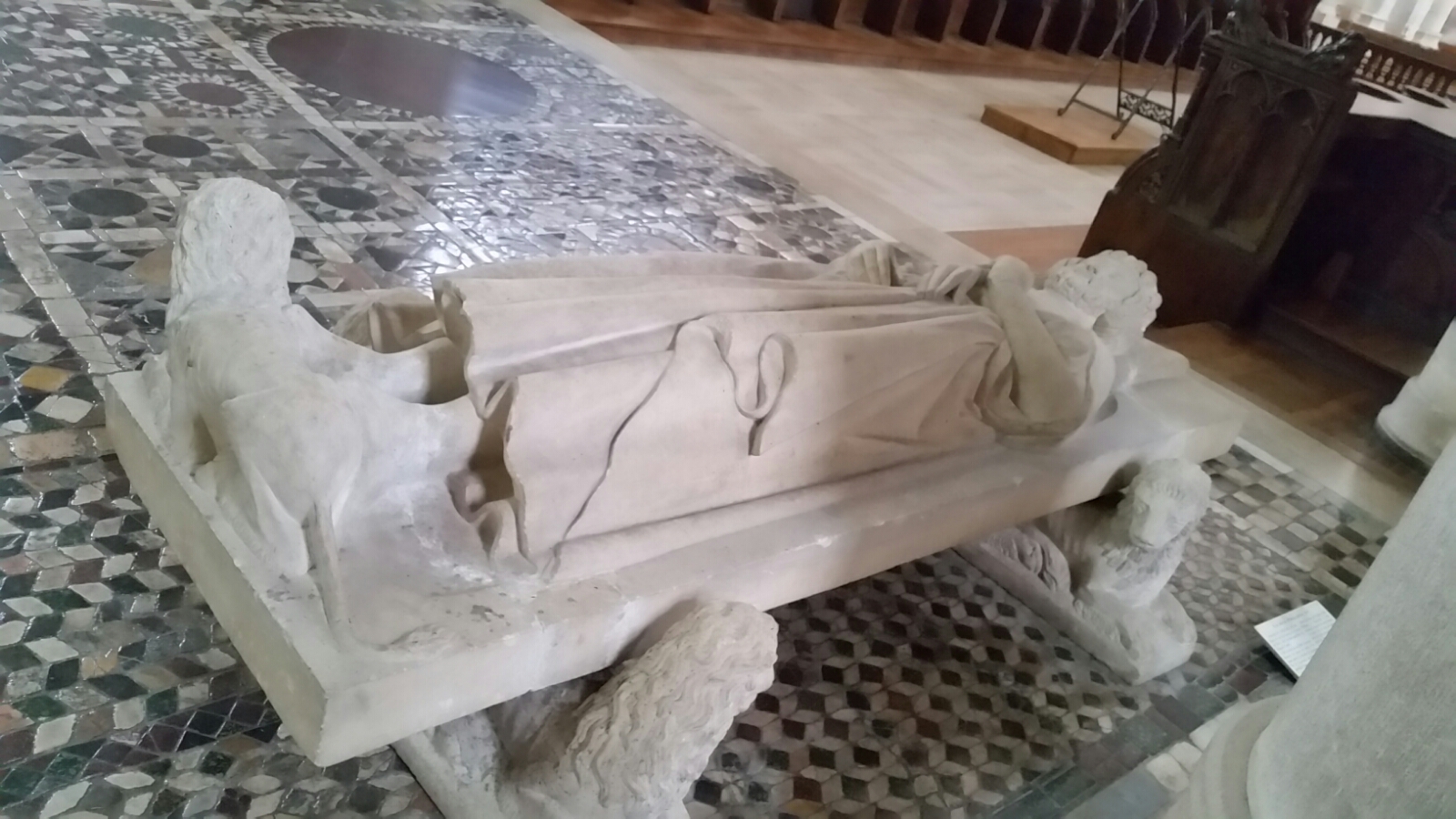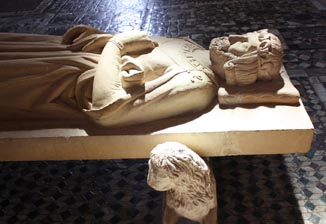Son of Henry I, King of the Franks and Anne of Kiev, Grandson of Robert II, King of the Franks and Constance or Arles, Yaroslav I the Wise, Grand Prince of Kiev and Ingegerd Olofsdotter of Sweden.
Philip was the husband of Bertha, the daughter of Floris I, Count of Holland and Gertrude of Saxony, daughter of Bernard II, Duke of Saxony. They married in 1072 and produced five children:
* Constance, wife of Hugh of Champagne & Bohemund of Antioch
* Louis VI, King of the Franks
* Henry b 1083, died young
* Charles b 1085
* Odo 1087-1096
Philip repudiated Bertha based on the fact she was too fat, and married a lady he had fallen in love with, Bertrade de Montfort, the daughter of Simon I de Montfort and Agnes, Countess of Evreux, and the wife of Count Fulk IV of Anjou. They were married 15 May 1092, even though they both had living spouses, and had three children:
* Philip, Count of Mantes
* Fleury, Seigneur of Nangis
* Cecile of France, wife of Tancred, Prince of Galilee & Pons of Tripoli
Despite being French, a Frank, and a Capetian line dating back to the Carolingians, Philip's mother chose a Greek name for her son. Phillip, as his ancestors, ruled for an unusual length of time for his era.
Philip's father died in 1060 when Philip was still a youth, and crowned at the age of seven. His mother acted as regent as the first Frankish queen, until he was fourteen. Baldwin VI of Flanders assisted her in her duties until he died in 1070, at which point Flanders was taken by Robert Frisian. Baldwin's wife received help from Philip who defeated Robert at the Battle of Cassel in 1071.
Philip was excommunicated in 1094 by Hugh, the Archbishop of Lyon, and again by Pope Urban II in 1095 for his second marriage.
Phillip made peace with William the Conqueror in 1077, allowing Phillip to annex Vexin, and take Bourges in 1100. When the role started for the First Crusade, Phillip refrained due to his conflicts with the pope over his wife, and sent his brother, Hugh of Vermandois in his stead.
Phillip died at the castle of Meulan, and her his request, was buried at the monastery of Saint-Benoît-sur-Loire – instead of at St Denis with his ancestors. Phillip was succeeded by his son, Louis VI, but not without other contestants.
Historian Abbot Suger wrote the following regarding Phillip's last days. "King Philip daily grew feebler. For after he had abducted the Countess of Anjou, he could achieve nothing worthy of the royal dignity; consumed by desire for the lady he had seized, he gave himself up entirely to the satisfaction of his passion. So he lost interest in the affairs of state and, relaxing too much, took no care for his body, well-made and handsome though it was. The only thing that maintained the strength of the state was the fear and love felt for his son and successor. When he was almost sixty, he ceased to be king, breathing his last breath at the castle of Melun-sur-Seine, in the presence of the [future king] Louis... They carried the body in a great procession to the noble monastery of St-Benoît-sur-Loire, where King Philip wished to be buried; there are those who say they heard from his own mouth that he deliberately chose not to be buried among his royal ancestors in the church of St. Denis because he had not treated that church as well as they had, and because among so many noble kings his own tomb would not have counted for much."
Son of Henry I, King of the Franks and Anne of Kiev, Grandson of Robert II, King of the Franks and Constance or Arles, Yaroslav I the Wise, Grand Prince of Kiev and Ingegerd Olofsdotter of Sweden.
Philip was the husband of Bertha, the daughter of Floris I, Count of Holland and Gertrude of Saxony, daughter of Bernard II, Duke of Saxony. They married in 1072 and produced five children:
* Constance, wife of Hugh of Champagne & Bohemund of Antioch
* Louis VI, King of the Franks
* Henry b 1083, died young
* Charles b 1085
* Odo 1087-1096
Philip repudiated Bertha based on the fact she was too fat, and married a lady he had fallen in love with, Bertrade de Montfort, the daughter of Simon I de Montfort and Agnes, Countess of Evreux, and the wife of Count Fulk IV of Anjou. They were married 15 May 1092, even though they both had living spouses, and had three children:
* Philip, Count of Mantes
* Fleury, Seigneur of Nangis
* Cecile of France, wife of Tancred, Prince of Galilee & Pons of Tripoli
Despite being French, a Frank, and a Capetian line dating back to the Carolingians, Philip's mother chose a Greek name for her son. Phillip, as his ancestors, ruled for an unusual length of time for his era.
Philip's father died in 1060 when Philip was still a youth, and crowned at the age of seven. His mother acted as regent as the first Frankish queen, until he was fourteen. Baldwin VI of Flanders assisted her in her duties until he died in 1070, at which point Flanders was taken by Robert Frisian. Baldwin's wife received help from Philip who defeated Robert at the Battle of Cassel in 1071.
Philip was excommunicated in 1094 by Hugh, the Archbishop of Lyon, and again by Pope Urban II in 1095 for his second marriage.
Phillip made peace with William the Conqueror in 1077, allowing Phillip to annex Vexin, and take Bourges in 1100. When the role started for the First Crusade, Phillip refrained due to his conflicts with the pope over his wife, and sent his brother, Hugh of Vermandois in his stead.
Phillip died at the castle of Meulan, and her his request, was buried at the monastery of Saint-Benoît-sur-Loire – instead of at St Denis with his ancestors. Phillip was succeeded by his son, Louis VI, but not without other contestants.
Historian Abbot Suger wrote the following regarding Phillip's last days. "King Philip daily grew feebler. For after he had abducted the Countess of Anjou, he could achieve nothing worthy of the royal dignity; consumed by desire for the lady he had seized, he gave himself up entirely to the satisfaction of his passion. So he lost interest in the affairs of state and, relaxing too much, took no care for his body, well-made and handsome though it was. The only thing that maintained the strength of the state was the fear and love felt for his son and successor. When he was almost sixty, he ceased to be king, breathing his last breath at the castle of Melun-sur-Seine, in the presence of the [future king] Louis... They carried the body in a great procession to the noble monastery of St-Benoît-sur-Loire, where King Philip wished to be buried; there are those who say they heard from his own mouth that he deliberately chose not to be buried among his royal ancestors in the church of St. Denis because he had not treated that church as well as they had, and because among so many noble kings his own tomb would not have counted for much."
Bio by: Anne Shurtleff Stevens
Inscription
Philippe
Family Members
Advertisement
Explore more
Sponsored by Ancestry
Advertisement















